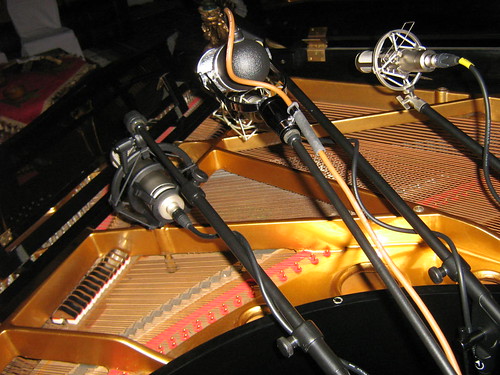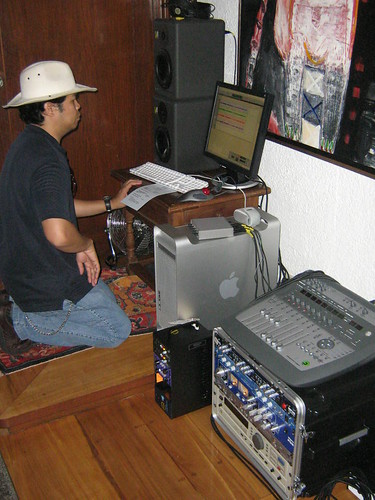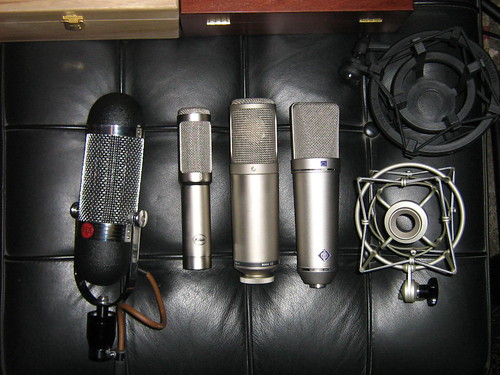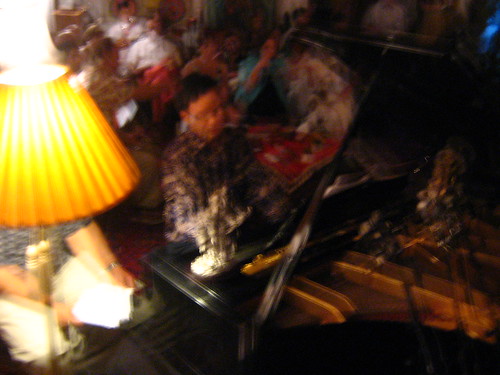Recording in the trenches, haul the studio out to record a baby grand piano
One lazy Wednesday afternoon in April, I was thrilled and challenged by a rather unique call – if Sound Weavers can record a Casio digital piano concert to be performed at a particular residence. Hmmm, ok. So I have always thought that such a remote recording requirement will come, and I have been slowly but surely preparing for such eventuality – ensuring that our recording studio staff and equipment will be ready for such remote recording task when the opportunity, time – and the call – comes knocking.
See, I have recently racked in a roadcase some recording equipment a couple of weeks back; the Presonus MP20 (dual mic preamp or 2×2 line mixer), the Apogee Rosetta 800 for pristine take no prisoner-spare no expense AD/DA, the Pendulum Audio PL-2 brickwall limiter (for safety coz there’s no going back to tame wild transients and spikes, in addition to the Rosetta’s softclip features), the tfpro p38 Compressor coz I’ll never really know how soft and quiet will be until the actual real performance, and the Panasonic SV38000 DAT player recorder either as a primary or back-up recorder (16bit 48Khz only and I like to record in 24bits). This rack is ready to go, I even thought of taking it home during the Holy Week break – but it’s kinda heavy – and I was waiting for a few pieces of the puzzle, too (quality cables and connectors).
So back to this remote concert recording call, upon a quick interview and analysis of client requirements – I said, let’s do it boys. We are ready! But wait, we had to do two things to prepare for this recording session; first is to scout the location – check the acoustics of the room and map out our best position; next is to get a copy of the program to determine the program length, as well as schedules such as arrival of artist – we also requested to have a rehearsal time or be in during the warmup – so I can do proper gain staging on all mics, pres and processors.
During the piano rehearsal about 3 hours before the start – the Artist played through the piano program material one at a time – this rehearsal I decided to record already. As I got to hear the piano pieces through and through – in between breaks, I would adjust mic positions and preamp gain to maximize tonal coverage of the baby grand piano. We played back the recorded performances as the Artist Pianist took his break – holy cow, the piano’s tone shone and glimmered in the fantastic and very balanced acoustics of the room! The room had brick floors, huge paintings, plants, sofas and a glass door, the ceiling was 10 to 12 ft high – the room sounded live in a diffusive manner – no slapback echo at all. Sweet! Already, the Client was beaming as to the quality of the piano sound recording. I, too was quite satisfied. Just need to jot down notes and settings for the main program.
Microphone choices. For this recording of a baby grand piano I chose to go with the following microphones; Rode K2 tube condenser microphone with it’s polar pattern set to the left of cardiod, the Neumann U87ai FET large diaphragm condenser in cardiod mode. Both condensers were position 12″ away. While the AEA R84 ribbon microphone and the newly arrived Peluso R14 ribbon microphone were positioned 18″ away. My intent was to have two pairs of sound, one up close and one a bit farther so we can have choices during mixing what kind of sound the client wants to project.
Signal chain. The microphone preamps used were all discrete API 512C for the condensers and Purple Audio BIZ for the ribbons with the DUAL button in. The preamps were connected cto ompressors and limiters, then to the Apogee Rosetta 800 which was then connected to the 002 via Lightpipe. We recorded at 48Khz 24 bit on the PowerMac G5.
During the program proper, our detailed preparation paid off as everything went smoothly as regards to the recording of the piano performance. There are other instances that I can say should be filed under “charged to experience” such as members of the audience taking pictures using digital cameras with the shutter sound not turned off! Or members of the audience still taking shots but walking around the microphones until they bump the stands – in the middle of a piano piece! Big OUCH! Other lessons are not as painful but worth noting nonetheless, such as the squeaks of the piano seat – obviously not evident during restrained practice play – but very very audible during the much animated and lively actual performance. Yes, I can hear everything. I can hear people swallowing down (clearing) their throats, breathing… the silence in between notes is so sacred and pure to have these other sounds around but this is a live performance with a really live audience in a hall. The Client was very candid about the subject when he told the audience they didn’t have to hold their breath.
I truly appreciate this remote recording experience. First of all, it was truly wonderful classical piano music that was played by a truly gifted master pianist. Second, all the preparation and expense was justified (I purchased a dedicated 1500watt AVR and 500watt UPS!). Third, I am so ready for more remote recording sessions! I’m excited for the 003 Rack to arrive then we are in serious remote recording business. The recording studio can still accept sessions in-house while I am on the road recording in the trenches! The BEACH? Yessss! Hee haw!
tags: Piano recording, remote recording session, recording studio







2 Comments
Jump to comment form | comments rss [?] | trackback uri [?]